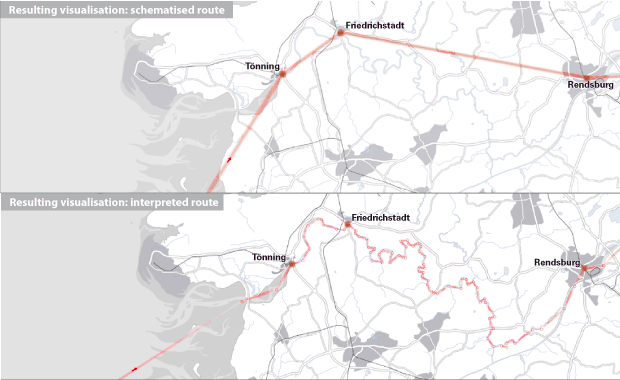A blog I reguarly read for the pure joy of cartographic material is
Beagraphy, written by Beate Weninger. She is a doctoral student of geography from Graz who is doing her
PhD about the usability of noise maps in Hamburg. We sometimes meet at the
UX roundtable where she presented her former
project about 'accoustically enhanced maps'.
Beate's
latest post pointed my to
the project 'Literaturatlas', co-headed by Lorenz Hurni of ETH Zurich, whom I visited five years ago to speak with him about his work on
terrain models, especially
reliefs for the blind. The Literaturatlas is a cartographic visualisation of places and routes that are mentioned in literature (see
the motivating scenario).
Amoung other visualisation techniques, schematised routes are used to clarify the arbitrariness of routes (in German) when only some (vague) waypoints are mentioned in some text. The concept of schematisation is used here in a similar way as in
my dissertation albeit
applied to routes not to whole street networks.
This is the first time that I see the term schematisation used outside of
my research group to describe the process of map abstraction. Although it used here to describe a visualisation technique (in cartographic terms, that is generalisation) it is similar to the drawing people produce when externalsing the cognitive schematisation that happens in their minds when listening to route descriptions or
reading tactile maps with their fingers.

